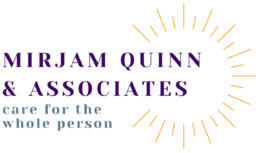The 5 Ws
Click on any circle to learn more
The MQA Client Journey:
The 5 Ws
- Welcome Home: We recognize your courage in reaching out. We respond quickly (within one business day).
- We’ve Got You: We learn how we can help. We work out the details (need, insurance, and availability). We build you a support team.
- Work Wisely: We provide groups for connection and coping, individual therapy for your specific journey, and testing for diagnosis and direction.
- We’ve Come So Far: We check in to see how we’re doing together. We make sure the changes made are sustainable, and we celebrate the progress you have made.
- Welcome Others: We’ll always be happy to see you and your loved ones should you ever need us again. We hope you empower others to seek support and make brave changes in their lives.
Our Guarantee
Upon acceptance, you will meet with a triage therapist within 7 days, and walk away from this initial meeting with a working diagnosis and a list of recommendations to try while you wait to be matched with your permanent therapist.
Trailhead appointments
At MQA, we’re always working to improve the accessibility and speed with which we can help our clients. As part of this commitment, we are excited to introduce our new Trailhead program, starting March 15, 2025. The Trailhead program matches you with a clinician within 7 days of acceptance, for a single “urgent care” appointment. During this appointment, you will meet with a triage therapist for a 1-hour consultation (billed through insurance). You can expect to walk away from this initial meeting with a working diagnosis and a list of recommendations to try while you wait to be matched with your permanent therapist.
